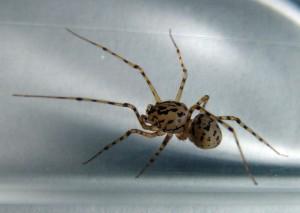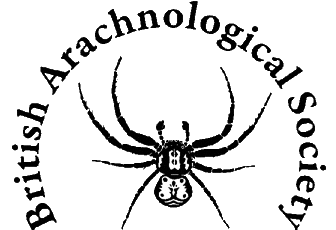The Spitting Spider Scytodes thoracica

Scytodes owes its common name to its habit of approaching its prey to within about 10mm then spraying, or spitting, an adhesive fluid at it from its jaws (chelicerae). This glues it to the ground and allows the slow moving spider to approach an immobilised prey safely before biting it, thus avoiding being hurt by a meal that might fight back. Most other spiders wrap up their prey with silk then bite it. Should the prey wriggle at all, Scytodes will bite again, move back and pause before approaching again. Once the spider is sure its prey is dead, it frees it from the sticky glue and takes it away to eat. The glue is also used for protection when the spider is threatened with attack. Although Scytodes is slow moving it does make sudden dashes and even jumps. It is easy to identify, being no more than 6mm in size with a creamy-pink body with black markings and similarly coloured legs marked with black bands. The abdomen is about the same size as its thorax. At the moment Scytodes is found in southerly counties and is most likely to be seen at night especially if you enter a room that has been in the dark and you turn the light on.
